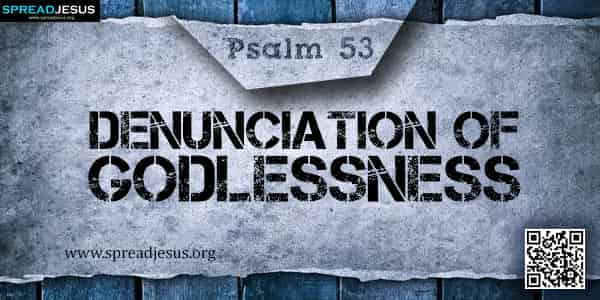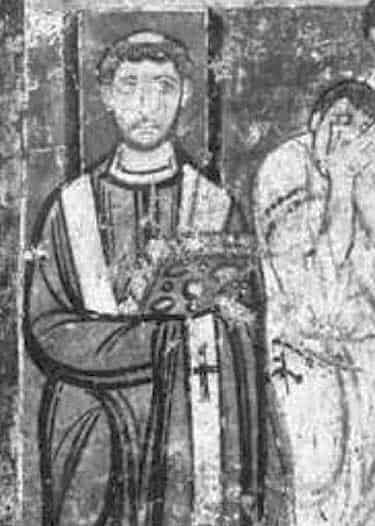Biblical Definition Of CANON
Biblical Definitions 28-12-2023, 19:51

Biblical Definition Of
CANON
According to the word’s early usages, a canon was a rule, standard, measure or list. According to popular Christian usage, the ‘canon’ of Scripture is that collection of writings that the church acknowledges as the authoritative Word of God. In other words, it is the list of books that make up the Bible. It consists of the Old Testament canon, which had become established during the centuries before the time of Christ, and the New Testament canon, which became established during the early centuries of the Christian era.
Canonical books are those acknowledged as being written through the inspiration of the Holy Spirit. Non-canonical books are religious books of the biblical era that are not acknowledged as being the inspired Word of God and have therefore not been collected in the Bible. They may be useful, and may even be referred to by the writers of the Bible (e.g. Num 21:14; Josh 10:13; 1 Chron 29:29; Jude 9,14), but they have no divine authority.
Israelite writers
From the beginning of their history as a nation, Israelites kept written accounts of their law and significant events in their history (Exod 24:4; Num 33:2; Josh 24:26; 1 Kings 11:41). Some of these writings were regarded as sacred and were kept at Israel’s sanctuary (Deut 31:24-26; 2 Kings 22:8). Others were used as sources of information for the writing of books that later became part of the Bible (1 Kings 14:19; 15:7; 2 Chron 9:29; 12:15; 20:34).
While some people made written records of laws and events, others made collections of proverbs and psalms (1 Kings 4:32; Ps 72:20; Prov 25:1). In addition prophets often wrote down their messages (Isa 30:8; 34:16; Jer 36:2; 51:60) and people who recognized these messages as God’s Word quoted them as authoritative (Jer 26:17-18; Dan 9:2).
The Old Testament collection
Under the guiding control of God, a recognized body of sacred writings was growing up in Israel. However, the formation of an official canon was not something that people planned. No person or group of persons decided to make an Old Testament canon. From the time of Moses people had clearly recognized certain writings as being the voice of God speaking to them, and as the years passed the collection of authoritative books grew. No one gave the books their authority. The books had authority within themselves, and people could do no more than acknowledge this.
No one knows for certain when the collection of sacred writings that we call the Old Testament was completed, but there are good reasons for thinking that Ezra and Nehemiah helped shape it towards its final form. They had come to Jerusalem in 458 and 445 BC respectively (Ezra 7:1-10; Neh 2:1-8), and played an important part in establishing the sacred writings as the basis of Israel’s religious life in the post-captivity period (Neh 8:1-3,8; 9:1-3). Leaders of following generations probably completed the work that Ezra and Nehemiah had begun.
It seems clear that the Jewish canon (i.e. our Old Testament) was firmly established by the time of Christ (Matt 21:42; Luke 24:27; John 5:39). Towards the end of the first century AD a council of Jewish leaders confirmed that Jews recognized these books, and no others, as canonical. (For the composition of the Old Testament. For the authority of the Old Testament canon that Jesus and New Testament writers acknowledged.)
Apocryphal writings
The third and second centuries BC produced many new Jewish writings. Some of these were vividly written and therefore were very popular, particularly in an age when great changes were occurring in the Jewish world. But their popularity did not give them authority, and they were never accepted into the Jewish canon.
These non-canonical books are in two groups. One group is known as the Apocrypha (literally, ‘hidden’, but meaning ‘disapproved’ or ‘outside’; i.e. outside the canon). The other group is known as the Pseudepigrapha (meaning ‘written under a false name’). In popular usage, ‘Apocrypha’ often refers to the two groups together. Early Christians may have read the books (e.g. Jude 9,14), but they did not regard them as Scripture.
Early Christian writings
In the early days of the church, the ‘Bible’ that the Christians used was what we call the Old Testament (Luke 24:27,44; Acts 8:32; 17:2,11; Rom 1:2; 4:3; 9:17; 2 Tim 3:15-16). But with the coming of Jesus, Christians saw that God’s revelation did not end with the Old Testament.
Jesus had promised the apostles that after he returned to his Father, the Holy Spirit would come to indwell them, enabling them to recall, interpret and apply his teachings (John 14:25-26; 16:13-15). The writings of the New Testament are part of the fulfilment of that promise. Apostles had God-given authority, and Christians recognized their teachings and writings as having the same authority as the Old Testament Scriptures (1 Cor 14:37; 1 Thess 5:27; 2 Thess 2:15; 3:14; 2 Peter 3:2; Rev 1:1-3).
A growing collection
As the writings of the apostles circulated, they gradually grew into a new collection in addition to, yet equal to, the Old Testament collection (2 Peter 3:15-16). It seems that when the early Christians evaluated the worth of the writings available to them, an important consideration was whether those writings came from the apostles or those who had the apostles’ approval. The Gospels, the letters of Paul, the book of Acts, and the letters 1 Peter and 1 John were accepted everywhere as authoritative from the time they began to circulate.
During the latter part of the first century and the early part of the second, a number of other Christian writings were circulating widely. Some of these were useful, but they were not accepted by the churches as authoritative. In time Christians in general acknowledged that these writings were not inspired Scripture, with the result that they were excluded from the developing New Testament canon.
On the other hand people in some regions took longer to accept all the writings that are now part of the New Testament. Although a particular church or group of churches may have accepted an apostolic letter as having authority for them, churches elsewhere may not have immediately seen the relevance of the letter for all churches. No doubt there were many letters which, though having apostolic authority, were not preserved (1 Cor 5:9; cf. 1 Thess 3:17). Also, letters that were very short or of uncertain authorship usually took longer to become widely known.
Completion of the canon
By the middle of the second century, churches in some places had a collection of books approximately equal to the present New Testament. But in other places people still had doubts about a small minority of books.
The damaging activity of false teachers was one factor that prompted church leaders to consider more closely which books were to be regarded as canonical and which were not. Church Councils met to discuss the matter at length, and by the end of the fourth century there was general agreement that the New Testament canon consists of the twenty-seven books that we recognize today.
Church Councils may have performed a useful service, but they could give no authority to the biblical books. The authority lay within the books themselves. They were the living Word of God (John 7:17; 1 Thess 2:13), and the Councils could do no more than acknowledge that authority. They did not create the canon, but merely acknowledged that Christians and churches everywhere recognized the books as being God’s inspired and authoritative Word.

PSALM 53 Denunciation of Godlessness Psalm 53:1 The fool says in his heart, “There is no God.” They are...
Learn more
Saint Leo IV-Pope Catholic Saint Feast Day : July 17 Leo was born into a Lombard family in Rome. He studied...
Learn more
The Final Awakening Many think that our greatest enemy is death. Is it? Others say that life is a dirty...
Learn more